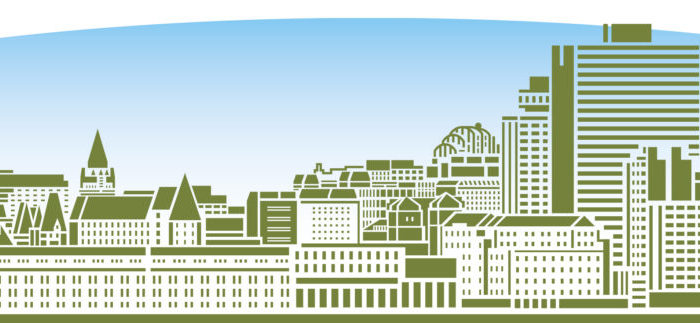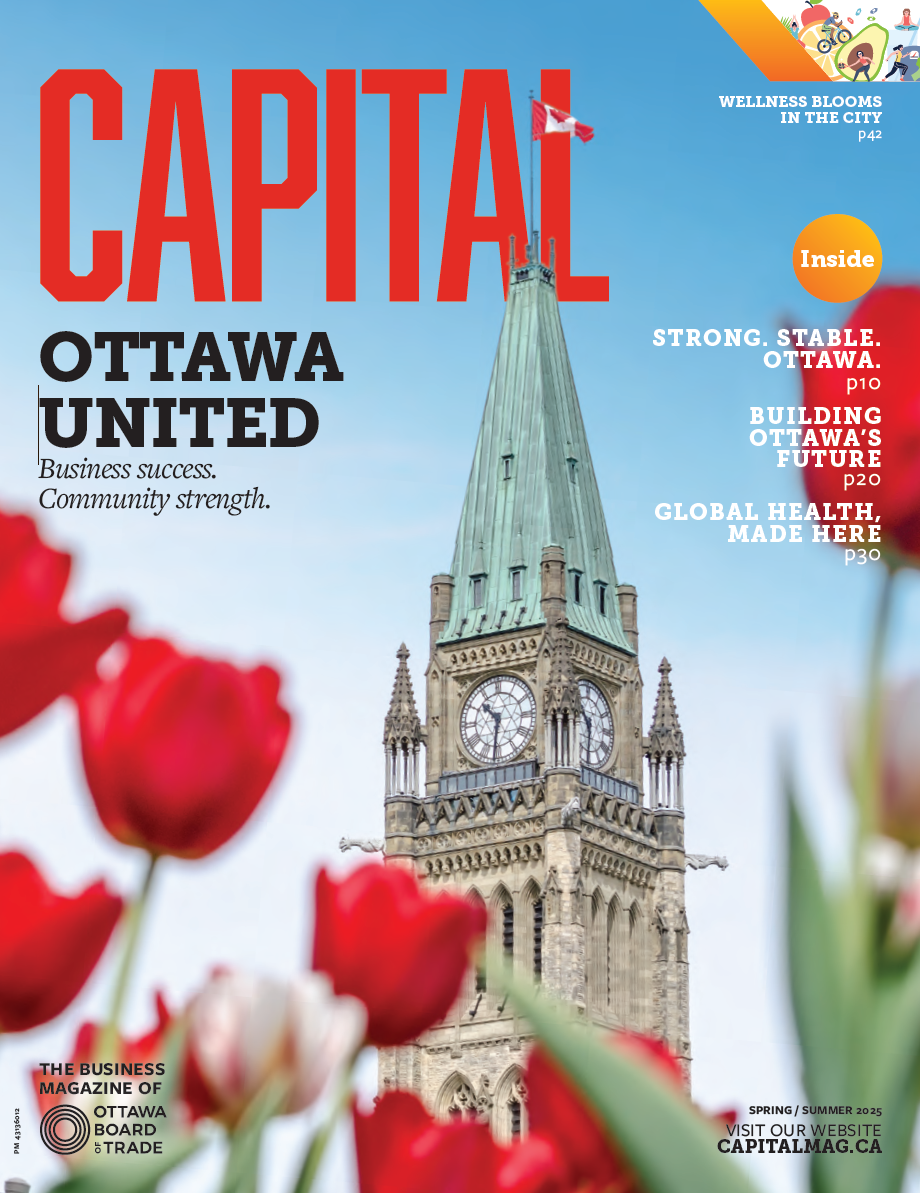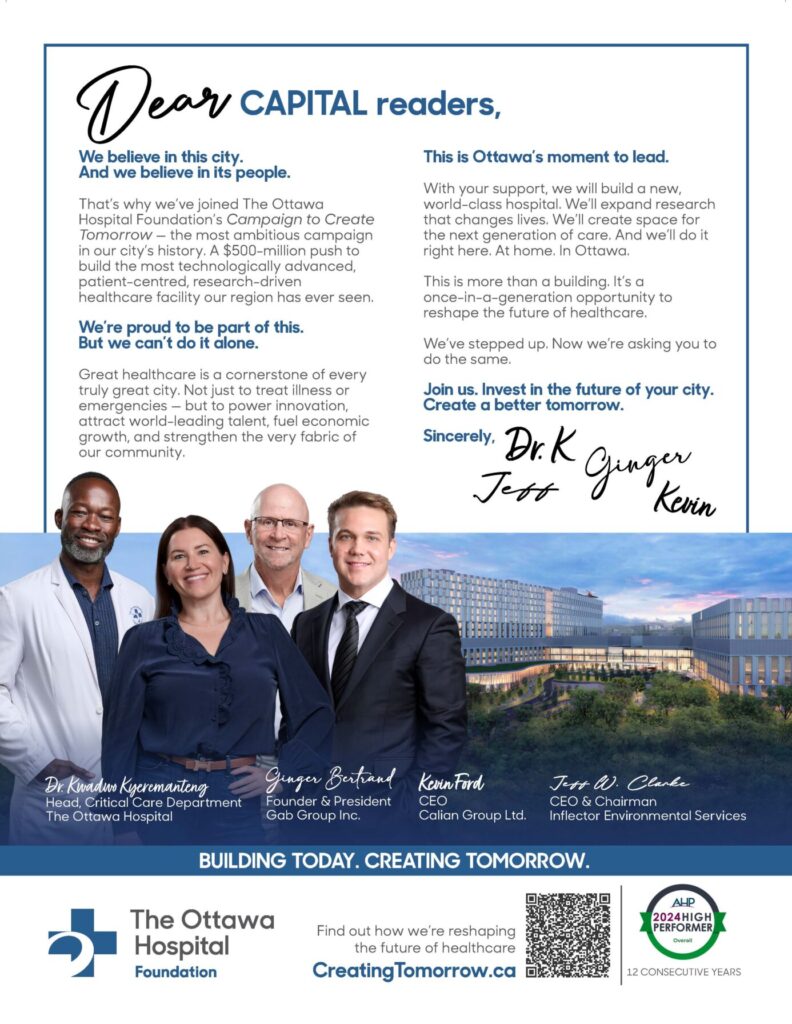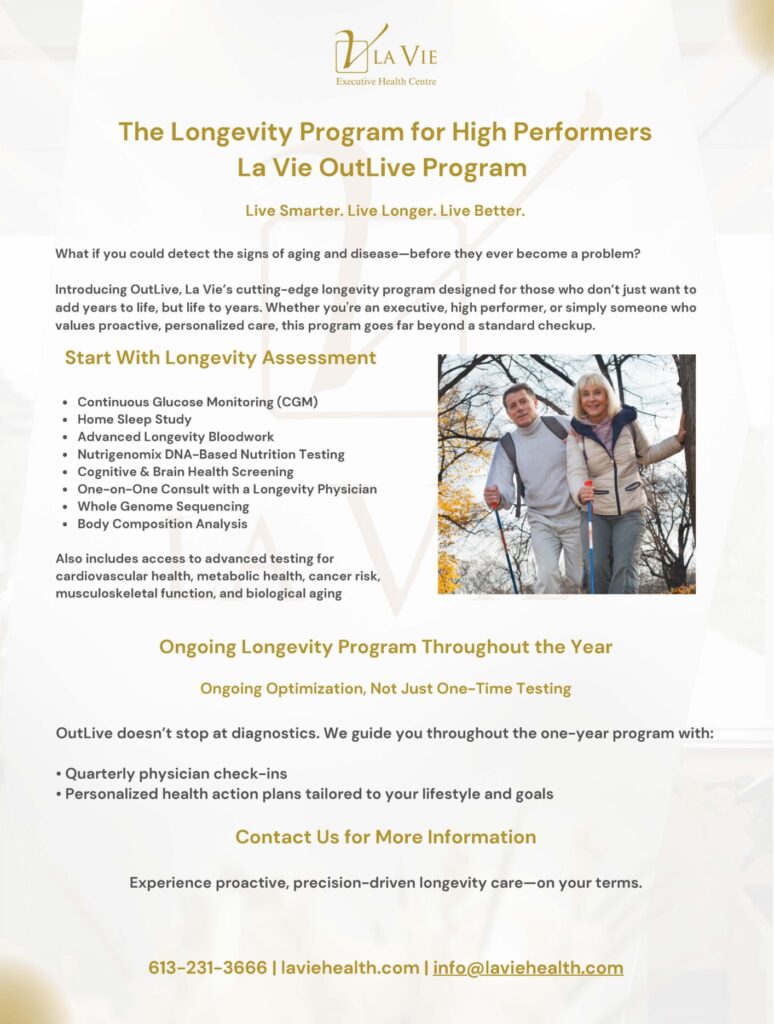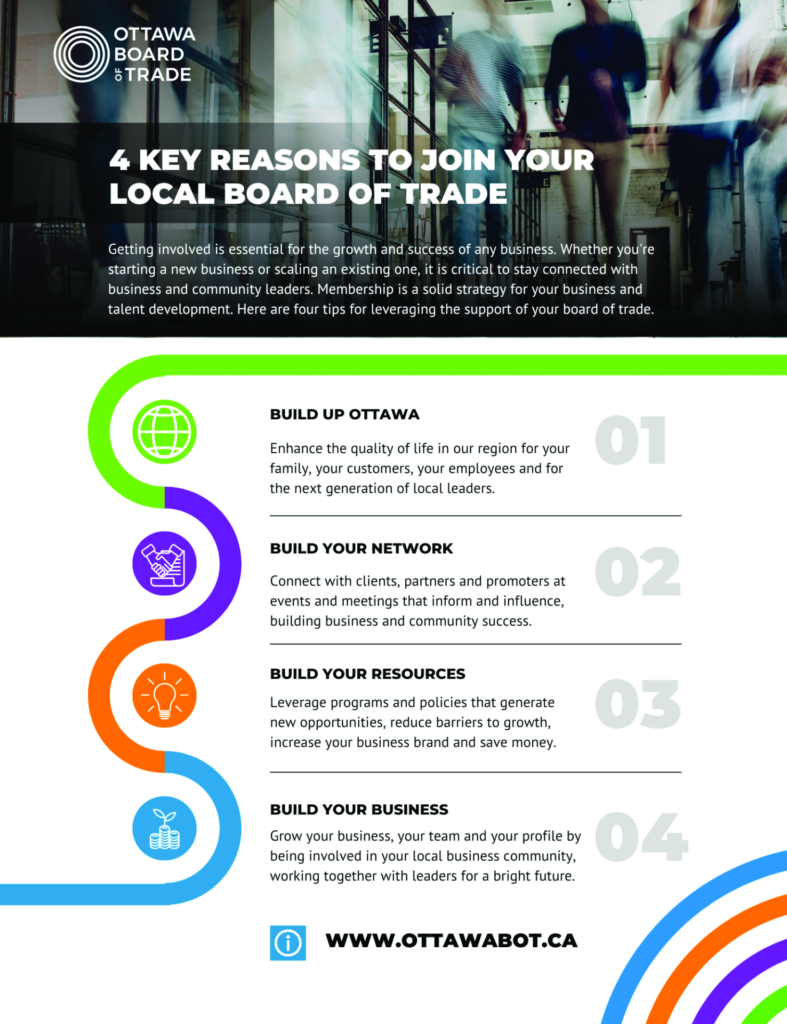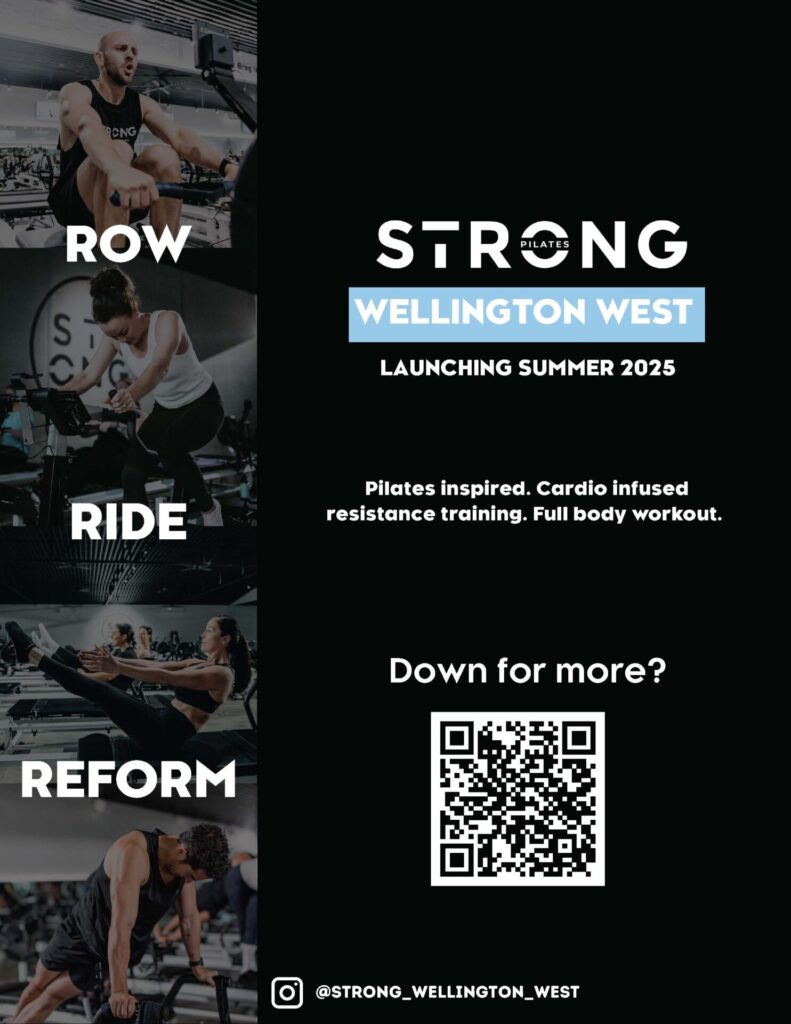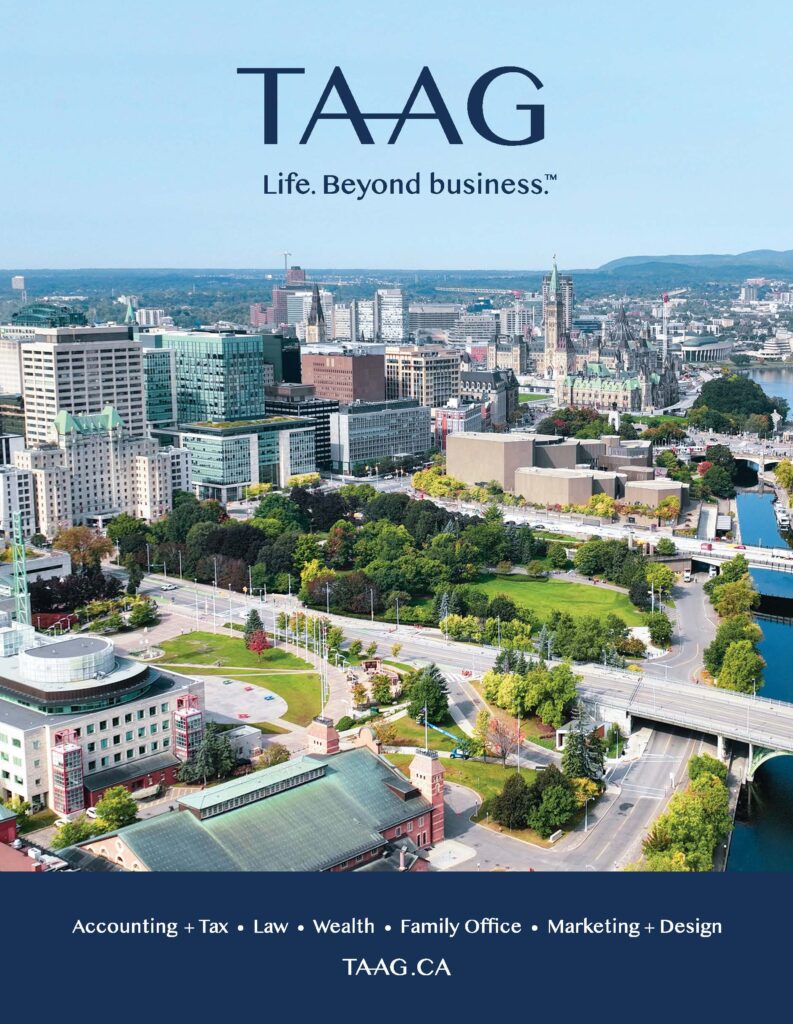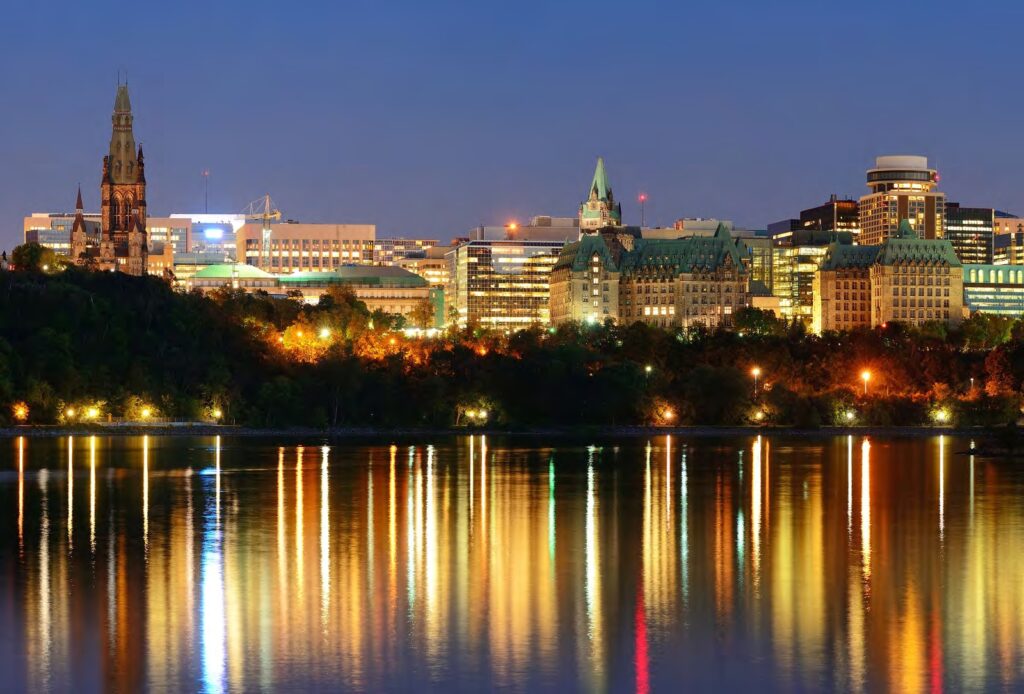Feature: City Building at its Best.

By Jennifer Campbell
Ottawa’s main players in tourism, tech, talent and transportation on what the city needs to do next.
What makes a good city? Jane Jacobs, an American- Canadian author and activist who wrote extensively on the subject, rejected the idea of urban renewal and slumclearing in favour of lively streets — streets that are as busy by night as they are by day. She described her vision as “a sidewalk ballet” of people interacting and depending on each other. Jacobs also fought highway development that took commuters out of the core through highway bypasses. And now, planners are heeding her call and removing highways to rejuvenate downtown cores.
In a Zoom seminar as part of the Board of Trade’s City Building Summit, some of Ottawa’s best minds banded together in Jane Jacobs fashion to tackle the question of “the Ripple Effect: How do tech, transportation, talent and tourism tie together?” Together, they identified gaps and noted achievements on which the city can build.
James Baker, the CEO and co-founder of Keynote Search, serves on the OBOT’s Board of Directors, and leads the organization’s Talent Development Committee. Baker says that talented local people are the one critical resource common to all of the ambitious work the City is undertaking, including massive revitalization projects at LeBreton Flats and in the ByWard Market, hospital rebuilding and the LRT.
“And the reality is we simply don’t have the talent in our city today to meet those plans for growth and expansion,” Baker said. “We have to attract them and once they get here, we have to keep them here.”
He says organizations are doing great work — he named what Invest Ottawa and Kanata North have done for the knowledge-based sector, but he said some much of it is being done in isolation.
“In post-secondary education, we have a great collective of students coming through, but we need to do a better job of keeping them here and we have a major gap in our market right now for mid-career professionals,” he said. “So whether I’m looking for a project manager for the trades, a fundraiser for a non-profit or a technical lead to come into one of our high-tech companies, we have a fundamental skill gap that can only be solved by attracting people here.”
“It’s about connection, the things that come together, and relationships.”
He recommended a collective talent strategy that meets the Board of Trade’s ambitious city-building agenda.
“We talked about building these wonderful places in our city, but right now, we have a major housing crisis,” he said. “The talent we need is mid-career, they’re looking for single-family homes, but the price has doubled in just five years. We have senior professionals we’re trying to move to the city, who are declining opportunities because they can’t find a place to live.”
He said in the 16 years he’s been here, this is the first time it’s been easier to hire someone in Toronto than Ottawa. Ottawa’s average compensation — at $90,000 — now exceeds Toronto’s, which is $82,000.
“For me, that should be a selling feature, but when we can’t get people to live here, they can’t take those opportunities that have high pay connected to them.”
On the technology side, he said Ottawa’s done a great job of branding itself a tech hub, but the rest of Canada is catching up.
Tech as a sector has grown by 20 per cent nationally in the last five years and yet Ottawa has only seen two per cent growth in its tech employment numbers.
To solve these problems, Baker says the city needs alignment and collaboration.
“It’s time that we have an organization that is responsible for talent,” he said. “We have it for the tourism sector, they do an incredible job, we have it for the tech sector, they do an incredible job. But I do ask that we come together to start forming a group that can support this agenda.”
Sonya Shorey, vice-president of strategy, marketing and communications at Invest Ottawa, was more bullish about the city’s prospects.
“Ottawa has so many amazing strengths,” Shorey said. “The true power as we come through his pandemic is how we harness those strengths.”
Shorey said Ottawa’s tech sector is “second to none” and spoke about the city’s technology test track known as Area X.O as well as the fact that Ottawa has the highest concentration of tech talent in all of North America. “[There are] 1,750 technology companies in this region, employing 78,000 people across a multitude of sectors. We boast the highest educated workforce in all of Canada; 61 per cent of our labour force holds a post-secondary degree. For a city of 1 million, we certainly punch far above our weight,” she said.
Ottawa’s potential to create disruptive technologies is vast, Shorey said, and the city has strengths in seval sectors, including artificial intelligence, machine learning, connected and autonomous vehicles, smart mobility, virtual reality and augmented reality.
“We’re a hotbed of disruptive capability, talent and opportunity and that creates very unique competitive advantages for us, particularly when we look at those global market opportunities,” she said and added that Invest Ottawa plays a role by helping startups launch and then scale.
Speaking about the sector most devastated by the pandemic, Catherine Callary, vice-president of destination development at Ottawa Tourism, took a more positive approach in telling the audience how they can help this sector — so crucial for the city’s economy — bounce back.
“The economic engine that tourism offers is impressive,” Callary said. “$2.2 billion in annual visitor spending is an economic injection of more than $6 million into our city every single day. Without tourism, taxes would be higher for every tax payer because the funds that tourism generates relieve some of the burden that residents would otherwise shoulder directly. In a normal year, on an average day, there are 40,000 visitors through Ottawa. Ottawa’s tourism industry employs over 43,000 people under normal circumstances.”
She offered a tip list for Ottawans about how they can help its tourism industry rebuild, to everyone’s benefit. She recommended encouraging business associations and professional groups to meet in Ottawa.
“You’re likely part of an association [that has] an annual conference and you have pull within your organizations,” she said, also adding sporting events into the mix. “Meetings are booked years in advance and if you set your mind on hosting your next meeting here, Ottawa Tourism helps with every step of that process.”
She encouraged residents to invite friends and family to come and visit Ottawa.
“If every household in the city invited two guests to visit for a long weekend, the economic impact would be a powerful restart to our visitor economy, generating $500,000 in the city to kickstart tourism again.”
Finally, she recommended “promoting, shopping and staying local” and being an ambassador for Ottawa on social media by sharing experiences in the city.
“If everyone commits to these five things, or even a couple of them, the impact on our destination would be huge,” she said. Tourism — like technology and talent — relies on good transportation systems and John Manconi, general manager of transportation services for the City of Ottawa, knows that all too well.
“For cities in the 21st century to be competitive, [they] need an integrated mobility system and at all levels, the key word is integration,” he said. “[They need] public transit, biking, walking, goods movement, cars.”
With big city-building projects, he said, it’s important to have OC Transpo at the table. It has been involved in discussions with Invest Ottawa about the test tracks since Day 1, Manconi said, and also with the Zibi development on the Ottawa River.
Manconi said OC Transpo didn’t cut service during the pandemic because those who still needed the service would have been deeply affected by its termination. “As difficult as that was, it was absolutely the right thing to do,” he said.
Stage 2 of the LRT system is another good news story, he said. “It is taking 11,000 tons of GHG and reducing it,” he said, and added that it’ll cut out 900,000 bus trips.
The cost of the project is $5.6 billion and half a billion has gone to local vendors already. So far, with just Stage 1, Ottawa has the busiest LRT line in North America and Stage 2 will include a dedicated line to the Ottawa airport.
His department is also investing $20 million in cycle tracks and multi-use pathways.
“During the pandemic, we didn’t stick our head in the sand and worry about the doom and gloom, behind the scenes, we changed and we’re changing dramatically and that’s thanks to the investment of our city council and the support not to cut services,” he said, and added that the transportation system will soon accommodate open payment systems.
“When you enter into our LRT systems and buses, you can pay any way you want,” he said. “Apple pay, credit card — and debit is coming.”
Bringing all four areas — tech, talent, tourism and transportation — together, Manconi ended his remarks by saying the Board of Trade has it right.
“It’s about connection, the things that come together, and relationships.”
